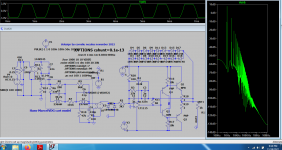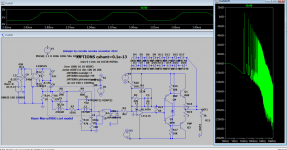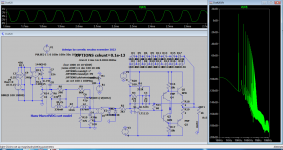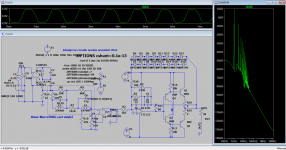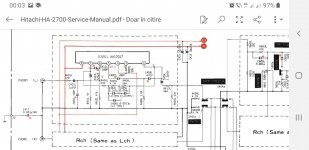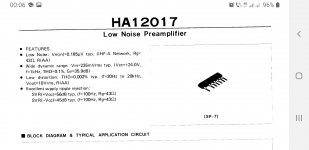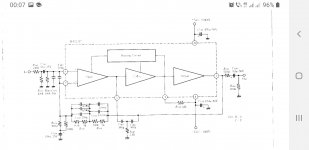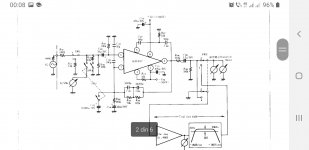I wash once when I buy a used record. I replace the paper sleeve with one that does not generate dust. Any remaining pops are permanent.Or just wash it?
Ed
It's kind of mystical...all the phono preamps employing bipolar transistors at the input that we tried don't have that annoying sound when playing a dusty record.The germanium ones behaved even better, but had audible noise...
Not really...just buy a cheap 70's receiver using a discrete bipolar design and see for yourself.
I have had a lot of different devices in repair, both old and not so much. Never noticed anything like it. Physically, this is also impossible. Surely there were some unaccounted factors, which gave birth to the legend.just buy a cheap 70's receiver using a discrete bipolar design and see for yourself.
I've made about couple of dozen needledrops from LPs. Typically there are 3-4 loud enough pops per LP that go beyond 0dB of the ADC. That is about 1-2V. Therefore I conclude events that need more than 20dB headroom are too rare to spoil the music enjoinment assuming the preamp has such headroom.
In my opinion, it is more to spoil the musical enjoinment if such gigantic pops are correctly reproduced.to spoil the music enjoinment
Maybe, but not necessarily. If signal clipping cause some sort of instability of the preamp, produced artefacts might be more objectionable than the pop itself. This question needs some experimenting and research.In my opinion, it is more to spoil the musical enjoinment if such gigantic pops are correctly reproduced.
Further, spectral content of unclipped pop may be mostly in the ultrasonic region, hence inaudible. But again, this takes more analysis
Last edited:
+14 dB is probably the norm. However, I have a classical recording (Stravinsky’s ‘Firebird Suite’) that has a huge dynamic range. The recording clips at one point.I am all for good overload margins, but if a record hit +20dB regularly, I would discard it. 😉
Ed
The reason for the >20dB O/L margin is to cater for a signal chain with gains/outputs on the high side.
Do not forget that we are talking about rare clicks of large amplitude (more than +20 dB), so it hardly matters how they sound.If signal clipping cause some sort of instability of the preamp, produced artefacts might be more objectionable than the pop itself.
Did you listen any? You must have been living in a very noisy annoying environment...Do not forget that we are talking about rare clicks of large amplitude (more than +20 dB), so it hardly matters how they sound.
I have several damaged LPs that have loud clicks. Each click is a catastrophe, there is absolutely no difference in the nuances of its sound. I generally avoid playing these discs. All other discs have no clicks that could approach the vinyl stage's overload threshold.Did you listen any? You must have been living in a very noisy annoying environment...
Although I ran most of the sims at 10khz, the behavior at 1khz is very similar as you can see in the last 2 printscreens.You can see a clear difference between a "marshall-esque" type of soft clipping and bare hardclipping caused by 20db higher input signals:Maybe, but not necessarily. If signal clipping cause some sort of instability of the preamp, produced artefacts might be more objectionable than the pop itself. This question needs some experimenting and research.
Further, spectral content of unclipped pop may be mostly in the ultrasonic region, hence inaudible. But again, this takes more analysis
Attachments
-
 phonosoftclip1.png35.1 KB · Views: 90
phonosoftclip1.png35.1 KB · Views: 90 -
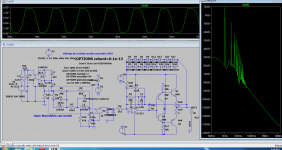 phonosoftclip1Khz.png38.5 KB · Views: 92
phonosoftclip1Khz.png38.5 KB · Views: 92 -
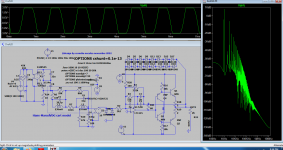 phonohardclip1kHz.png39 KB · Views: 82
phonohardclip1kHz.png39 KB · Views: 82 -
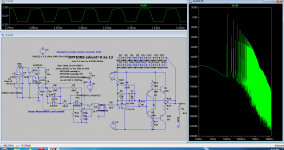 phonohardclip3.png35.6 KB · Views: 86
phonohardclip3.png35.6 KB · Views: 86 -
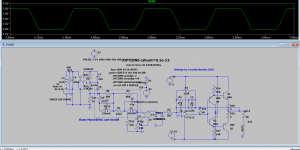 phonohardclip2.png25 KB · Views: 81
phonohardclip2.png25 KB · Views: 81 -
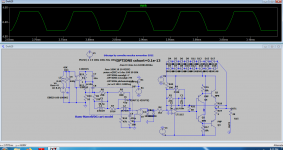 phonohardclip1.png32.8 KB · Views: 82
phonohardclip1.png32.8 KB · Views: 82 -
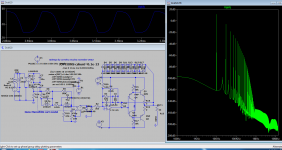 phonosoftclip5.png33.5 KB · Views: 79
phonosoftclip5.png33.5 KB · Views: 79 -
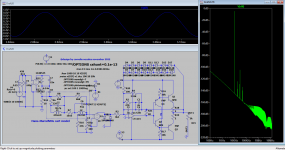 phonosoftclip4.png33.2 KB · Views: 77
phonosoftclip4.png33.2 KB · Views: 77 -
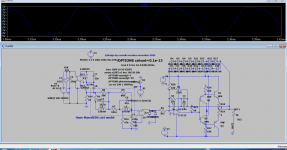 phonosoftclip3.png30.4 KB · Views: 76
phonosoftclip3.png30.4 KB · Views: 76 -
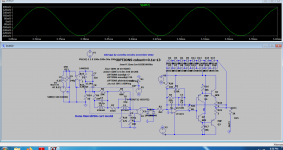 phonosoftclip2.png35.3 KB · Views: 95
phonosoftclip2.png35.3 KB · Views: 95
It's not at all interesting how the clip looks - it never happens with good LPs. And with the bad - does it matter how it sounds?
Well...ask an electric guitar player about the types of distortions...And hard clipping does happen a lot with dust on records .Some op amps come back faster from saturation...others not that fast, but all suffer of hard clipping with the right signal on the input.
Just realized one trz in the previous simulations was in the air, but the op amp was doing all the job anyway...ignore the diamond buffer...it's there for a different circuit.I'm working right now on such a circuit so I'm tuned to the subject...
Just realized one trz in the previous simulations was in the air, but the op amp was doing all the job anyway...ignore the diamond buffer...it's there for a different circuit.I'm working right now on such a circuit so I'm tuned to the subject...
Attachments
I believe this statement is false.And hard clipping does happen a lot with dust on records.
Then I wish you good luck with explaining the reason for this datasheet:
Attachments
It is very simple to resolve the dispute: you need to digitize the LP, made with a level of about -20 dB or lower, so that the entire dynamic range of the phono stage fits into the ADC scale. There you will immediately see if there was clipping of the amplifier. I can't give an example of clipping.
Not so. I had one new LP with a terribly loud pop in just one place, that persisted for many cleanings and playings.I wash once when I buy a used record. I replace the paper sleeve with one that does not generate dust. Any remaining pops are permanent.
Then one day it was completely gone. The foreign particle had finally worked loose.
Sounds like quite a boulder. Its amazing how tough a diamond stylus actually is when you think about such events.Not so. I had one new LP with a terribly loud pop in just one place, that persisted for many cleanings and playings.
Then one day it was completely gone. The foreign particle had finally worked loose.
- Home
- Source & Line
- Analogue Source
- Looking for SS Phono Preamp
